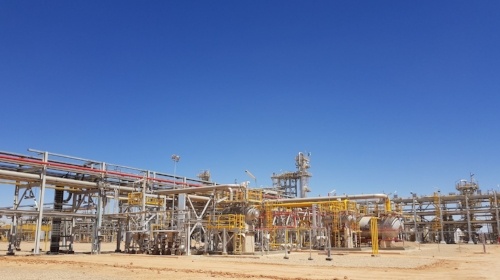1 min read
Weekend Reading: Oil Supply, Demand & Prices In Pictures
In an attempt to put things a few things in perspective, while noting that it's Friday and most are already enjoying the weekend, we've compiled a...

For the first time since 2008, OPEC (Organization of the Petroleum Exporting Countries) has agreed to reduce its aggregate output by 700,000-800,000 barrels per day (BPD), or to around 32.5 million to 33 million BPD, an agreement that has suprised the vast majority of oil market analysts. That being said, the lackluster reaction in both WTI and Brent futures is quite telling to say the least. Perhaps most market participants have grown tired of OPEC "crying wolf" and not adhering to the quotas?
In short, a production freeze at levels that allows all OPEC members to continue to produce at or near maximum capacity will do very little to reduce the oversupply in the market, especially given that many US indepedent producers are learning how to not only survive, but do quite well, in a sub-$50/BBL market. Furthermore, given the lack of details related to the annoucement, we are once again forced to wonder, which OPEC members, if any, will be willing to reduce their own output knowing that some or most of the others will "cheat"?
It should be noted that in November 2014 OPEC members agreed to abandon the objective of attempting to balance the market in order to defend market share that was being lost to non-OPEC producers. At the time they made the decision, OPEC’s market share loss over the previous 5 years only amounted to approximately 2%. The group’s production, in fact, was still near an all-time high. But perhaps they were looking at the lessons of history, hoping to avoid a repeat of what happened in the wake of the 1973 oil embargo, which led to significant market share losses amongst it's members.
OPEC’s market share peaked in 1973 at 51.2% of global crude oil production. Over the next 12 years it fell to under 28% in the wake of the oil embargo. Over the next decade OPEC managed to regain market share, reaching 40% of the world’s crude oil production in the 90′s. OPEC’s share of global oil production has remained around that level for over 20 years, but because global oil demand is rising the group’s production has actually risen by about 12 million BPD since the 90′s.
As is always the case as it relates OPEC decisions, compliance (or perhaps more accurately, the usual lack of compliance) will determine whether the cartel has any meaningful ability to impact oil prices in a world where independent producers, rather than OPEC, are arguably the real swing producer. Perhaps more importantly, independent producers are now learning to not only survive, but do quite well, in a sub $50/BBL environment. In fact, in recent weeks we have met with many independent producers who are raising capital to acquire assets which can produce desirable returns in a $30-$40/BBL environment. While many OPEC members can indeed produce at well below $50/BBL, the fact remains that most are unable to achieve a fiscal break-even at anywhere near current market prices. While the data is somewhat dated, we highlighted said break evens in a previous post - Sovereign Oil & Gas Hedging - A Different Perspective.
Another aspect that is often missed with regards to OPEC production agreements - it has historically required a decline in oil demand to ensure the that all OPEC members are compliant, and at the moment it appears rather unlikely that we will see a significant decline in global oil demand in the near-to-medium term. While some will argue that global oil demand is likely to decline in the coming years, the fact is that demand is still growing today.
As we have previously addressed in various other posts, should OPEC's actions or any other variable, increase oil prices for any meaningful period of time, there is no question that independent producers will again increase output, which will again reduce prices. Which begs the question, how can OPEC members survive, and perhaps even do well in a low price environment? Unfortunately, the answer is not one which will be well received by the citizens of the cartel's member countries - significant spending cuts, cuts which would need to create fiscal break-even levels in the $30-$50/BBL range.
In summary, if OPEC's proposed cut is strictly enforced and supports prices, it's quite likely to prove self-defeating as non-OPEC producers around the world will respond with increased drilling and production, once again creating an inbalance between supply and demand.
1 min read
In an attempt to put things a few things in perspective, while noting that it's Friday and most are already enjoying the weekend, we've compiled a...

4 min read
How Do Sovereign Energy Companies Influence Commodity Markets and Expectations? Petróleos Mexicanos (Pemex) makes headlines about once per year...
2 min read
Over the past few years we've seen significant changes in the energy markets, even more so as it relates to crude oil & natural gas hedging and...